Luis Lastras
Activated LoRA: Fine-tuned LLMs for Intrinsics
Apr 16, 2025Abstract:Low-Rank Adaptation (LoRA) has emerged as a highly efficient framework for finetuning the weights of large foundation models, and has become the go-to method for data-driven customization of LLMs. Despite the promise of highly customized behaviors and capabilities, switching between relevant LoRAs in a multiturn setting is highly inefficient, as the key-value (KV) cache of the entire turn history must be recomputed with the LoRA weights before generation can begin. To address this problem, we propose Activated LoRA (aLoRA), which modifies the LoRA framework to only adapt weights for the tokens in the sequence \emph{after} the aLoRA is invoked. This change crucially allows aLoRA to accept the base model's KV cache of the input string, meaning that aLoRA can be instantly activated whenever needed in a chain without recomputing the cache. This enables building what we call \emph{intrinsics}, i.e. highly specialized models invoked to perform well-defined operations on portions of an input chain or conversation that otherwise uses the base model by default. We use aLoRA to train a set of intrinsics models, demonstrating competitive accuracy with standard LoRA while achieving significant inference benefits.
A Library of LLM Intrinsics for Retrieval-Augmented Generation
Apr 16, 2025Abstract:In the developer community for large language models (LLMs), there is not yet a clean pattern analogous to a software library, to support very large scale collaboration. Even for the commonplace use case of Retrieval-Augmented Generation (RAG), it is not currently possible to write a RAG application against a well-defined set of APIs that are agreed upon by different LLM providers. Inspired by the idea of compiler intrinsics, we propose some elements of such a concept through introducing a library of LLM Intrinsics for RAG. An LLM intrinsic is defined as a capability that can be invoked through a well-defined API that is reasonably stable and independent of how the LLM intrinsic itself is implemented. The intrinsics in our library are released as LoRA adapters on HuggingFace, and through a software interface with clear structured input/output characteristics on top of vLLM as an inference platform, accompanied in both places with documentation and code. This article describes the intended usage, training details, and evaluations for each intrinsic, as well as compositions of multiple intrinsics.
Granite Embedding Models
Feb 27, 2025Abstract:We introduce the Granite Embedding models, a family of encoder-based embedding models designed for retrieval tasks, spanning dense-retrieval and sparse retrieval architectures, with both English and Multilingual capabilities. This report provides the technical details of training these highly effective 12 layer embedding models, along with their efficient 6 layer distilled counterparts. Extensive evaluations show that the models, developed with techniques like retrieval oriented pretraining, contrastive finetuning, knowledge distillation, and model merging significantly outperform publicly available models of similar sizes on both internal IBM retrieval and search tasks, and have equivalent performance on widely used information retrieval benchmarks, while being trained on high-quality data suitable for enterprise use. We publicly release all our Granite Embedding models under the Apache 2.0 license, allowing both research and commercial use at https://huggingface.co/collections/ibm-granite.
A Non-autoregressive Model for Joint STT and TTS
Jan 15, 2025Abstract:In this paper, we take a step towards jointly modeling automatic speech recognition (STT) and speech synthesis (TTS) in a fully non-autoregressive way. We develop a novel multimodal framework capable of handling the speech and text modalities as input either individually or together. The proposed model can also be trained with unpaired speech or text data owing to its multimodal nature. We further propose an iterative refinement strategy to improve the STT and TTS performance of our model such that the partial hypothesis at the output can be fed back to the input of our model, thus iteratively improving both STT and TTS predictions. We show that our joint model can effectively perform both STT and TTS tasks, outperforming the STT-specific baseline in all tasks and performing competitively with the TTS-specific baseline across a wide range of evaluation metrics.
NESTFUL: A Benchmark for Evaluating LLMs on Nested Sequences of API Calls
Sep 04, 2024Abstract:Autonomous agent applications powered by large language models (LLMs) have recently risen to prominence as effective tools for addressing complex real-world tasks. At their core, agentic workflows rely on LLMs to plan and execute the use of tools and external Application Programming Interfaces (APIs) in sequence to arrive at the answer to a user's request. Various benchmarks and leaderboards have emerged to evaluate an LLM's capabilities for tool and API use; however, most of these evaluations only track single or multiple isolated API calling capabilities. In this paper, we present NESTFUL, a benchmark to evaluate LLMs on nested sequences of API calls, i.e., sequences where the output of one API call is passed as input to a subsequent call. NESTFUL has a total of 300 human annotated samples divided into two types - executable and non-executable. The executable samples are curated manually by crawling Rapid-APIs whereas the non-executable samples are hand picked by human annotators from data synthetically generated using an LLM. We evaluate state-of-the-art LLMs with function calling abilities on NESTFUL. Our results show that most models do not perform well on nested APIs in NESTFUL as compared to their performance on the simpler problem settings available in existing benchmarks.
Granite-Function Calling Model: Introducing Function Calling Abilities via Multi-task Learning of Granular Tasks
Jun 27, 2024


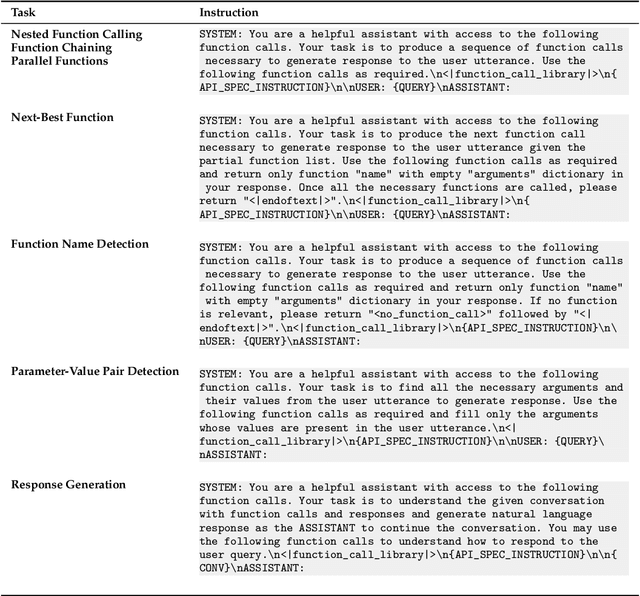
Abstract:Large language models (LLMs) have recently shown tremendous promise in serving as the backbone to agentic systems, as demonstrated by their performance in multi-faceted, challenging benchmarks like SWE-Bench and Agent-Bench. However, to realize the true potential of LLMs as autonomous agents, they must learn to identify, call, and interact with external tools and application program interfaces (APIs) to complete complex tasks. These tasks together are termed function calling. Endowing LLMs with function calling abilities leads to a myriad of advantages, such as access to current and domain-specific information in databases and knowledge sources, and the ability to outsource tasks that can be reliably performed by tools, e.g., a Python interpreter or calculator. While there has been significant progress in function calling with LLMs, there is still a dearth of open models that perform on par with proprietary LLMs like GPT, Claude, and Gemini. Therefore, in this work, we introduce the GRANITE-20B-FUNCTIONCALLING model under an Apache 2.0 license. The model is trained using a multi-task training approach on seven fundamental tasks encompassed in function calling, those being Nested Function Calling, Function Chaining, Parallel Functions, Function Name Detection, Parameter-Value Pair Detection, Next-Best Function, and Response Generation. We present a comprehensive evaluation on multiple out-of-domain datasets comparing GRANITE-20B-FUNCTIONCALLING to more than 15 other best proprietary and open models. GRANITE-20B-FUNCTIONCALLING provides the best performance among all open models on the Berkeley Function Calling Leaderboard and fourth overall. As a result of the diverse tasks and datasets used for training our model, we show that GRANITE-20B-FUNCTIONCALLING has better generalizability on multiple tasks in seven different evaluation datasets.
Formally Specifying the High-Level Behavior of LLM-Based Agents
Oct 12, 2023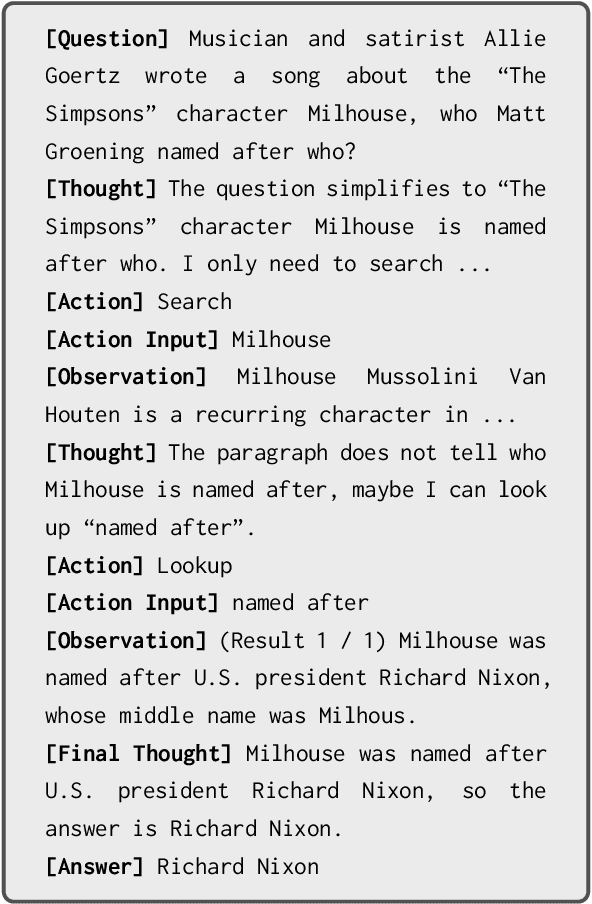
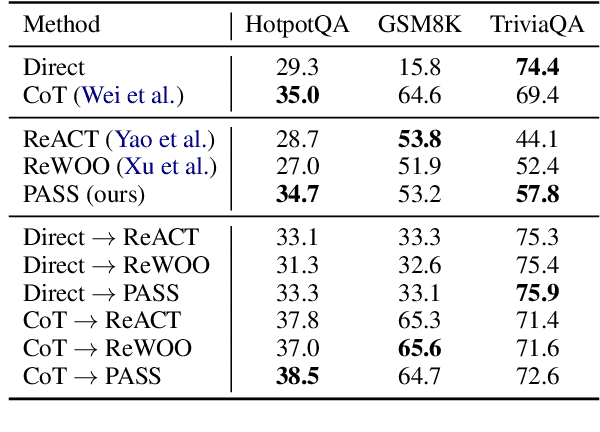
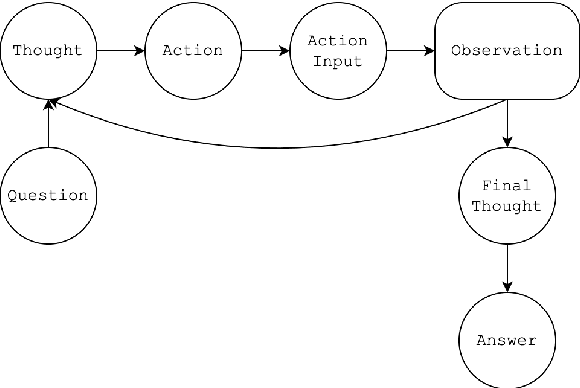

Abstract:LLM-based agents have recently emerged as promising tools for solving challenging problems without the need for task-specific finetuned models that can be expensive to procure. Currently, the design and implementation of such agents is ad hoc, as the wide variety of tasks that LLM-based agents may be applied to naturally means there can be no one-size-fits-all approach to agent design. In this work we aim to alleviate the difficulty of designing and implementing new agents by proposing a minimalistic, high-level generation framework that simplifies the process of building agents. The framework we introduce allows the user to specify desired agent behaviors in Linear Temporal Logic (LTL). The declarative LTL specification is then used to construct a constrained decoder that guarantees the LLM will produce an output exhibiting the desired behavior. By designing our framework in this way, we obtain several benefits, including the ability to enforce complex agent behavior, the ability to formally validate prompt examples, and the ability to seamlessly incorporate content-focused logical constraints into generation. In particular, our declarative approach, in which the desired behavior is simply described without concern for how it should be implemented or enforced, enables rapid design, implementation and experimentation with different LLM-based agents. We demonstrate how the proposed framework can be used to implement recent LLM-based agents, and show how the guardrails our approach provides can lead to improvements in agent performance. In addition, we release our code for general use.
Conversational Document Prediction to Assist Customer Care Agents
Oct 05, 2020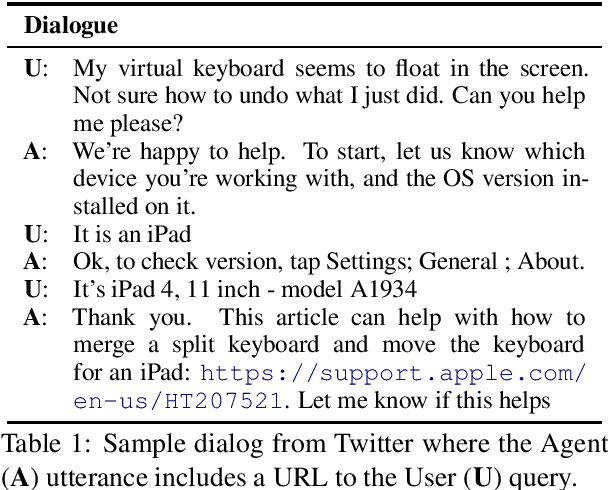

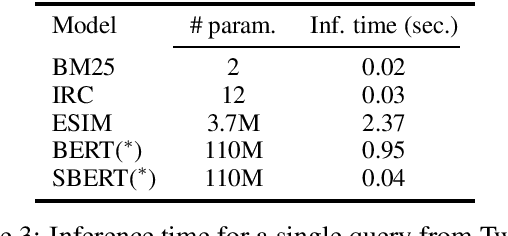
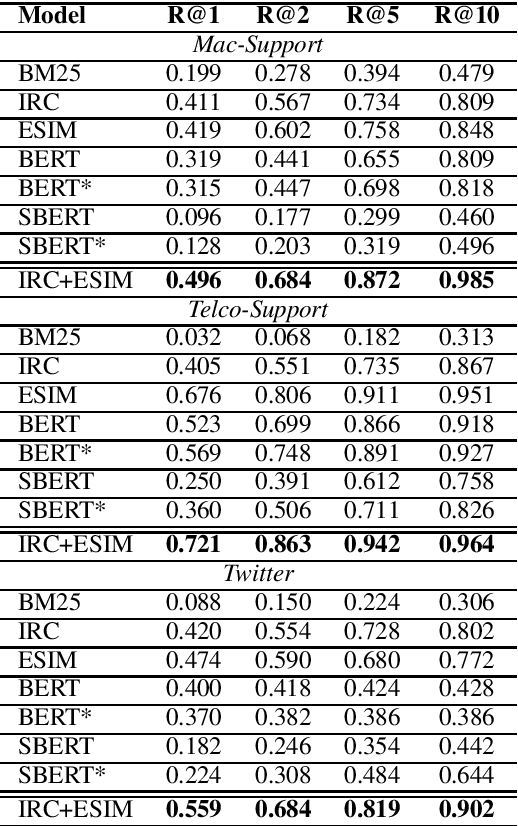
Abstract:A frequent pattern in customer care conversations is the agents responding with appropriate webpage URLs that address users' needs. We study the task of predicting the documents that customer care agents can use to facilitate users' needs. We also introduce a new public dataset which supports the aforementioned problem. Using this dataset and two others, we investigate state-of-the art deep learning (DL) and information retrieval (IR) models for the task. Additionally, we analyze the practicality of such systems in terms of inference time complexity. Our show that an hybrid IR+DL approach provides the best of both worlds.
End-to-End Spoken Language Understanding Without Full Transcripts
Sep 30, 2020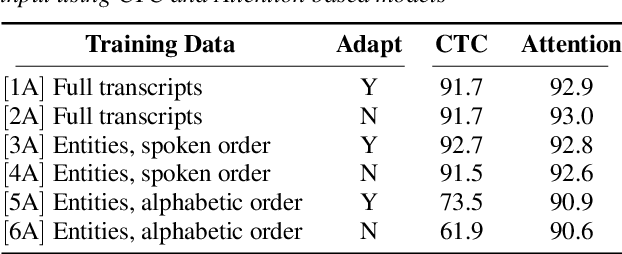
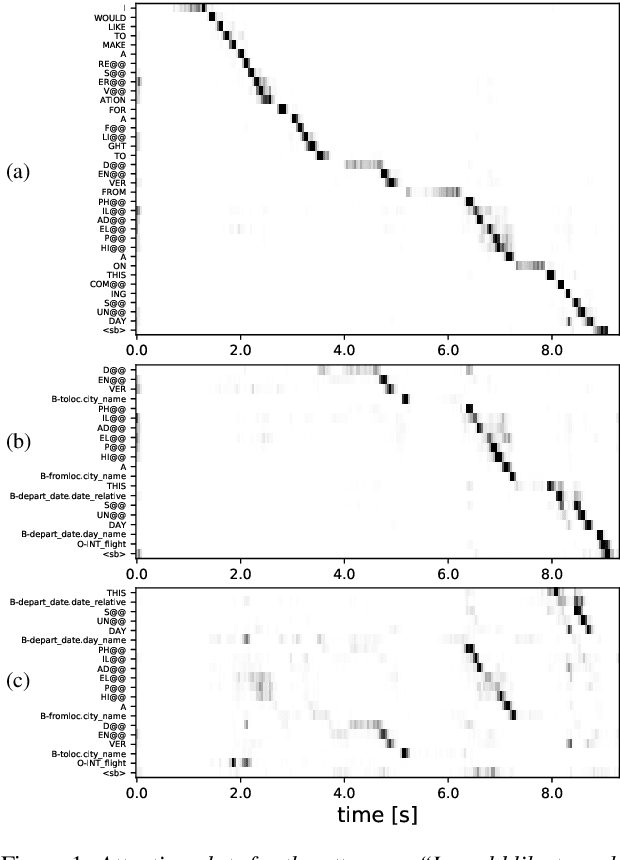
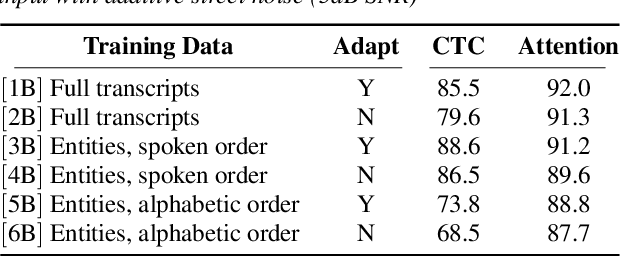
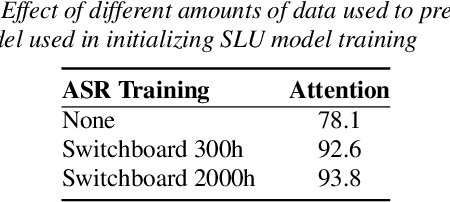
Abstract:An essential component of spoken language understanding (SLU) is slot filling: representing the meaning of a spoken utterance using semantic entity labels. In this paper, we develop end-to-end (E2E) spoken language understanding systems that directly convert speech input to semantic entities and investigate if these E2E SLU models can be trained solely on semantic entity annotations without word-for-word transcripts. Training such models is very useful as they can drastically reduce the cost of data collection. We created two types of such speech-to-entities models, a CTC model and an attention-based encoder-decoder model, by adapting models trained originally for speech recognition. Given that our experiments involve speech input, these systems need to recognize both the entity label and words representing the entity value correctly. For our speech-to-entities experiments on the ATIS corpus, both the CTC and attention models showed impressive ability to skip non-entity words: there was little degradation when trained on just entities versus full transcripts. We also explored the scenario where the entities are in an order not necessarily related to spoken order in the utterance. With its ability to do re-ordering, the attention model did remarkably well, achieving only about 2% degradation in speech-to-bag-of-entities F1 score.
The Eighth Dialog System Technology Challenge
Nov 14, 2019
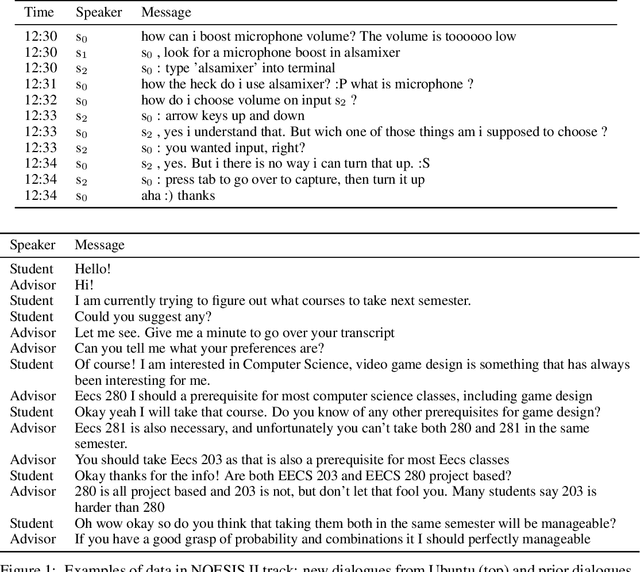


Abstract:This paper introduces the Eighth Dialog System Technology Challenge. In line with recent challenges, the eighth edition focuses on applying end-to-end dialog technologies in a pragmatic way for multi-domain task-completion, noetic response selection, audio visual scene-aware dialog, and schema-guided dialog state tracking tasks. This paper describes the task definition, provided datasets, and evaluation set-up for each track. We also summarize the results of the submitted systems to highlight the overall trends of the state-of-the-art technologies for the tasks.
 Add to Chrome
Add to Chrome Add to Firefox
Add to Firefox Add to Edge
Add to Edge